2013 in just twelve images on different formats
by Bjarke Ahlstrand
Last year I did a – one year – 2012: 12 months, 12 images, 12 cameras / lenses in total guest report for Steve. It was tough to make, it’s really hard to narrow down a big production to just one image per month, but very rewarding as well.
So I decided to do the same this time around. Those familiar with my work, either here at Steve’s site or my own www.oneofmany.dk will notice that I’ve been drifting slightly towards film and large format recently. The slow process has been healthy for me mentally and photographically speaking. I shoot less images, but work harder for each one, and it’s a thrill to learn new skills — especially ones that aren’t linked to Photoshop.
2013 was a good year for me in many ways, and also challenging. Sometimes I feel I’m balancing between being creative and obsessed, both when it comes to shooting portraits as well as using new cameras and lenses, hehehe. I still treasure my Leica M9-P more than anything else, but the artistic freedom (and limits) the large format view cameras give are very inspiring. Nowadays, whenever I grab a digital camera, I miss the selective focus / shallow depth of field while shooting large format extremely open, but also the tonality and amount of detail that I get from even 100-year-old non-coated lenses. An 8×10″ is approximately 60 times digital full frame, and a Swiss built large format Sinar camera, be it 60 years or 6 years old, is at east 60 times more fun to operate than a modern Canon/Nikon.
Well, here are 12 images, one for each month, all shot on different cameras, formats and lenses.
——–
FILE: 1 – January – 8×10 – silver shade polaroid
Miss Roxy – Arca Swiss 8×10″ – 305 mm Kodak Portrait Lens (ca. 1930) @ f/4.5 – Silver Shade Polaroid
The Impossible Project revived the 8×10″ Polaroid, when they purchased the last production machine from the bankrupt Polaroid plant in Mass, USA, and had it moved to their European headquarters in Holland. The Silver Shade Polaroid, the only one being made in the 8×10″ large format size, isn’t exactly black and white, but still nice to work with, as long as you can live with chemical defects, and manage to get your hands on an antique Polaroid processor which is need to pair the 8×10″ negative with the positive (large format doesn’t work like the old peel-apart Polaroid cameras and film!). Miss Roxy, my assistant posed for this image, which was shot with quite a few tilt and shifts on a 1970s Arca Swiss camera, and the lens mounted on the camera is a wonderful, wonderful 1930s soft focus Kodak Portrait Lens.
–
FILE: 2 – February – Hasselblad h3d
Zombieboy – Hasselblad H3D-39 – 150 mm Fujinon HC @ f/5.6
When it comes to sharpness, tonality, color and file quality, no digital camera beats the 39 megapixels Hasselblad medium format monster. And yes, I’ve shot the Nikon D800, but it doesn’t even come closer, and neither do the lenses. The Hassy is slow and heavy and really suffers if you go past ISO200, but if you treat it like a film camera, it works excellent, and the resolution it offers is utterly amazing even though it’s a few years old now.
–
FILE: 3 – march – 4×5 – sinar polaroid
Anker – Sinar P2 4×5″ – 240 mm unknown 1860s Petzval lens @ f/3.8 – Expired Fuji Polaroid
I love the fast lenses! Everyone who’s ever shot a manual f/1 lens, like the Noctilux, Nokton or Sonnetar, knows how difficult it is to achieve a somewhat precise focus. But when you move to the large format, in this case, the 4×5″ film format, things get waaaaay more difficult control — and if your lenses were made in 1860 instead of 1960, you add to the difficulty aspects, but the reward is equally bigger, if you nail it. And even though the output material is an old expired Fuji Polaroid, the depth of field and detail is amazing. It was shot a night-time, using only my Ikea table lamp as the light source — and two small light candles which I place behind him.
–
FILE: 4 – april – 5×7 – kodak 2b wetplate collodion berlin
Alex – Kodak 2B 5×7″ – 150 mm Rapid Rectilinear @ f/8 (ca 1890) – wetplate collodion
Mmmmmhhhh, the smell of ether 🙂 When I had a chance to join a wetplate collodion seminar in Berlin, held by American David Puntel, I simply had to attend. What a fine (and difficult) process. I’m sure most of you have heard or read about it elsewhere, so I won’t go into the tech/chemical aspects, but just recommend everyone into photography to try the 1850-1851 photography process, which is very rewarding. It sharpens your senses, and you really consider, plan and compose your image, before pressing the shut… ehh, correct that, you don’t use a shutter for this, because the old lenses have none, and you need a lot of (day)light. You just remove the darkslide, take off the lens cap, and let the subject, in this case animation director, Alex Brüel Flagstad, sit absolutely still for 14 seconds. This was a so-called half-plate which is a tiny bit smaller than 4×5″. Notice the silver nitrate on my fingers. It took months before it disappeared.
–
FILE: 5 – may – Leica m9-p 35 summicron
Assistant+Artist shot by oldest clone – Leica M9-P – 35 mm Summicron @f/2 (1st version, anno 1964)
A rare shot of me in action. I am placed one the right with the dark cloth on my head, while planning a 4×5″ Ektachrome dias portrait shoot. My oldest son, Hjalte, shot this behind the scenes photo with the Leica M9-P and an old 35 mm Summicron that I’d just purchased from conflict photographer Jan Grarup, whom I guess is the only real documentary/war professional who actually shoot with Leica for a living. Jan exchanged his old glass in favor for the new Voigtländers, so I got his old 35 mm Summicron. The first version of the classic lens really shines on the M9-P, which is still my all-time favourite digital camera, due to portability and quality (as long as you don’t enter the 640+ iso’s, hehe) and not least lenses, lenses, lenses.
–
FILE: 6 – june – leica m typ240 apo-summicron
Katja naturelle – Leica M Typ240 – 50 mm Apo-Summicron Asph @ f/2
I don’t have a Typ240, I just borrowed one along with the new 50 mm Apo-Summicron Asph for a day. With my love of cameras, I have of course considered the Typ240 many times, but every time I hold one, it just doesn’t feel like my kind of camera. Can’t exactly say why, and I know it beats my older M9-P technically speaking, I just think the CCD sensor of the old Leica renders better/differently (at lower ISOs). The new 50 mm Apo-Summicron, on the other hand, whauuuuh, that one would be a nice addition to my collection of Leica 50’s (Noctilux Asph, Summilux Asph, Sonnetar, Jupiter-3, Summitar, Summar), but the price tag… well, I guess I’d rather buy 10 antique Petzval lenses for my large format cameras… Or a Monochorme. But it sure is nice, resolution wise almost matching the medium format Schneider Kreuznach, Rodenstock and Fujinon HC lenses, just so much smaller. This image is straight out of camera, no adjustments, and wide open @ f/2.
–
FILE: 7 – july – 8×10 – Dallmeyer 2A Petzval f4 – Fuji Velvia 50
Katja Nun – Sinar P2 8×10″ – 300 mm Dallmeyer Petzval 2B (ca 1870) @ f/3.8- Fuji Velvia 50
Same subject as before, my girlfriend Katja, only this time around she was shot on a 140 year old Dallmeyer Petzval lens. The Petzval lenses are famous for their swirliness around the edge and utter sharpness in the center. They’re extremely fast (f/3.8 – f/4 on large format is like f/1 on kleinbild 35 mm in-depth of field terms, and if you tilt-shift the camera it’s even more extreme). I shot this on an old, expired 8×10″ Velvio 50ISO dias in the very last evening light, and she had to sit still for half a second. With the light passing and time it takes to re-focus, load the film holder (which only holds two images, one on each side), removing the darkslide and wait for the camera to stand still, you only have one chance, so you often miss a shot. Especially sharpness wise as the depth of field is extremely small. But not this time around. Of course what you see here is a low resolution file, but the original 8×10″ positive – and scanned file amazes me. If only 8×10″ dias weren’t so tough to come by (and expensive) this would be my preferred medium. But hopefully you get a glimpse of the sharpness and bokeh this old lens produces…
–
FILE: 8 – may – 4×5 – Linhof 135 mm
Viking Viggo – Linhof Technika IV 4×5″ – 135 mm Symmar @ f/5.6 – Ilford Delta 100
Now and then it’s nice to go offline. Away from mails, text messages, facebook, hell — even stevehuff.com! Especially if you have kids who are always online, and addicted to it. So this summer, my clones (ages 14 and 9) and I spent one weekend as vikings at a historic “reservation”. The offspring agreed to leave every electronic device at home, as long as I did the same. So I bought my Linhof Technika IV and 5 filmholders, so I would be able to shoot maximum 10 images through out a whole week. It turned out to be somewhat of a challenge, as there were many nice photo opportunities and, for once, I had a lot of time on my hands. But I guess the slow-photography-dogma was therapeutic to me, and when I got home and developed the ten sheets of film, I was thrilled that 7 out of 10 turned out very well. This one is my favorite. I was chopping wood but discovered that Viggo was playing with a kitten behind a tent, so I located the Linhof, guessed the light (1/8th of a second at f/5.6 on a Ilford Delta 100 sheet film), called his name and pressed the shutter. I adore the old school documentary-ish vibe it has to it. This is film when it’s best, and I couldn’t have done something with this tonality had it been a digital camera. Playing viking for a whole week, I sure missed my Leica, but the large format “portable” Linhof proved to be a worthy companion (it was my first time using the German 1960s mechanical metal marvel — the Leica of large format! It’s extremely well-built, like a Leica).
–
FILE: 9 – september – leica monochrome 50 mm sonnetar f1
Mrs Madsen On The Roof – Leica Monochrome – 50 mm MS-Optical Sonnetar @ f/1.1
I adore the Monochrome, and I wish I owned one. Every time I borrow one, I love and loathe it at the same time. It’s so extravagantly priced and immensely simple, but it just works — especially with old lenses. Or old lens designs, as is the case with this crazy handmade Japanese lens, the Sonnetar, based on the Sonnar design, but taken to extremes; both size wise and in aperture terms. Wide open its f/1.1, a little hard to handle, but produces dreamy images with out of this world background bokeh (it’s after all made in Japan). I don’t think Steve has had a review or guest report with images taken with this lens, which I bought directly from Japan earlier this year, but if there’s a demand for it, I might do a small review and supply some samples (it handles color images very well as well). It’s very cheap compared to the Noctilux, and performs way, way, way better than the horrible Cosina (Voigtländer) Nokton f/1.1.
FILE: 10 – october – 8×10 – direct_positive_paper
Afghan Princess – Sinar P2 5×7″ – 360 mm Voigtländer Heliar (ca anno 1903) @ f/4.5 – Ilford Direct Positive Paper
I often shoot paper negatives on large format. It’s a cheap way of testing new lenses (paper is way cheaper than negatives), but you always have to either make contact prints in the dark room or scan it and invert it Photoshop. Enter the very nice Ilford Direct Positive Paper, which is sort of a mixture of classic photo paper and polaroid. You shoot it in your 4×5″, 5×7″ or 8×10″ film holder, and when you develop it (in paper chemicals – and under red light) it transforms from a negative to a positive. A bit like wet plate collodion, except this is far easier and less dangerous, chemically speaking. So I’d recommend this to everyone shooting large format, as it’s very pleasing to see the result directly after you’ve shot your image. In this case I did a portrait of an Afghan (refugee) princess with a fantastic 110 year old 36 cm / 360 mm Voigtländer Heliar portrait lens, which even survived a fire some ten years ago and has cement between the elements! Those old Voigtländer lensus unlike the new Cosina-branded ones for Leicas and micro 4/3s are very well made, and perform excellently, even one hundred years are they were made. The Direct Posistive Paper is rated somewhere in between ISO1 and ISO3 and is most suited for pinhole cameras, as it’s very contrasty, but I think it’s nice for portraits as well, as long as you learn to balance your light a bit. For this I used a flash, or was it three ProFoto generators 😕
–
FILE: 11 – november – 1913 goecker studio wood camera expired 809 polaroid
Jesper – Goecker Wooden Studio Camera (1913) 8×10″ – Dallmeyer 3B 300 mm Portrait Lens @ f/4 – Expired (1995) 809 Polaroid
I buy a lot of old gear, and I always appreciate spending time with the old time pros or collectors from whom I get my gear. In this case, I bought some old Linhof cameras (4×5″ and 5×7″) from an old master about to retire. He had been a pro for 45 years (!), and never went digital. In his hay days he developed 2000 5×7″ prints every day! Both color and b&w. He also had an old (dating back to 1913) wooden studio camera in his studio and I immediately fell in love with the old beauty. A 100 year old camera, which still works like a dream. It was equipped with a gigantic Petzval-design portrait lens, the Dallmeyer 3B. Neither camera nor lens had any shutter, which – unless you shoot wetplate or paper negatives – actually can be somewhat of a problem due to the (short) exposure times. But fortunately the old pro found a box of old 8×10″ 809 Polaroid’s, a film I’d never shot before, which expired back in 1995. He doubted I could get anything out of the remaining 4 polaroid’s in the box, but I did. This image was shot only with the light from my living room lamp, using my HAND as a shutter for approximately one second. I absolutely love the final result – what you see here is a plain scan of the image I shot. Notice the text lines next to his face – they come from the “negative condom” or protection sheet that the polaroid’s were wrapped in. Somehow, during the 18 since (since expiration date) some of the text managed to creep unto the negative. Pure light magic.
–
FILE: 12 – december – canon 5d mark iii
Teen Clone – Canon EOS 5D Mark II – Canon 24-50 mm II @ f/4
My oldest clone never wants to be photographed because he’s 1) a teenager 2) thinks his father is embarrassing 3) doesn’t like cameras or photography 4) has braces and pimples all over his face — BUT — he also needed to give his mother, my ex-wife, something for x-mas, so he bought a frame, and asked if I would do a portrait. I did two, actually, an 8×10″ analogue, but then I snapped a test shot with my Canon, and it turned out best. Yes, that’s right. I do digital light metering tests before using precious sheet film / polaroids! I practically never use the Canon camera, as it’s big and has no personality and uses auto focus zoom lenses, hahaha. Well, snobbing aside, its video capabilities talk for them selves, but it is of course the 5D Mark III is a very capable professional tool, very rarely failing in any way. But I still prefer an old Leica, Linhof or an old wooden studio camera 🙂
I guess that concludes my 2013 in just twelve images on different formats, cameras and lenses.
Perhaps I should mention, that I’m in the process of my building my own 20×24″ ultra large format camera, so perhaps you’ll see an image from that alongside a Minox next year, hehe.
Best,
Bjarke

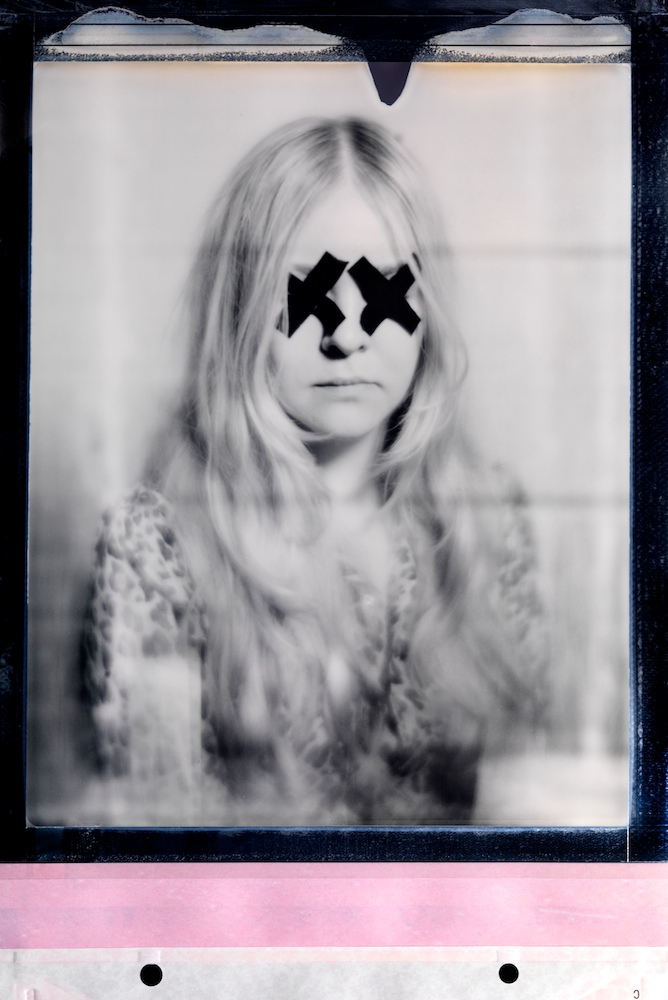
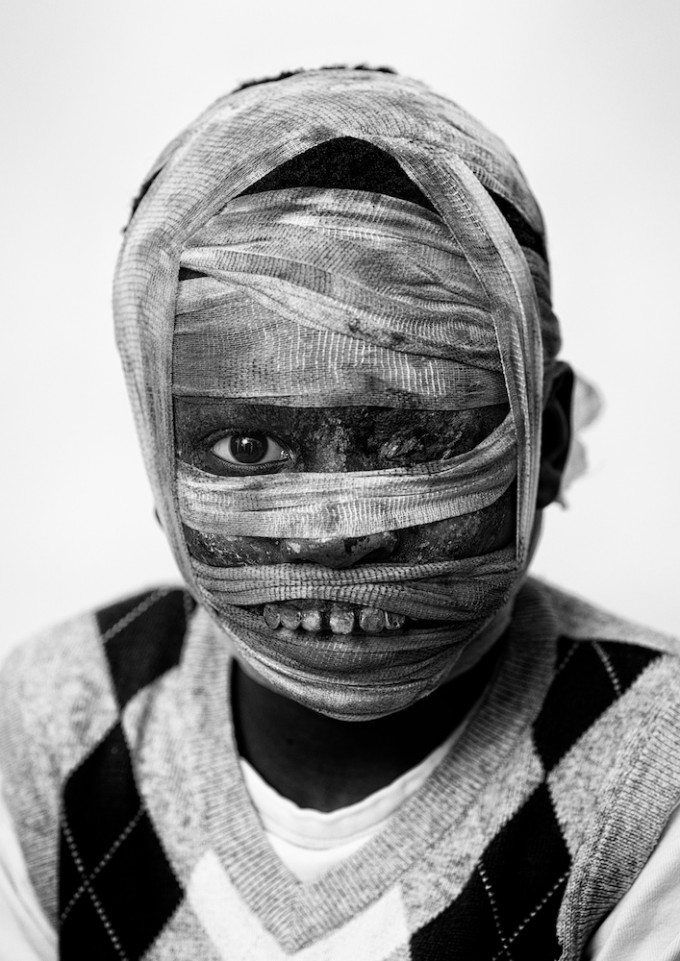
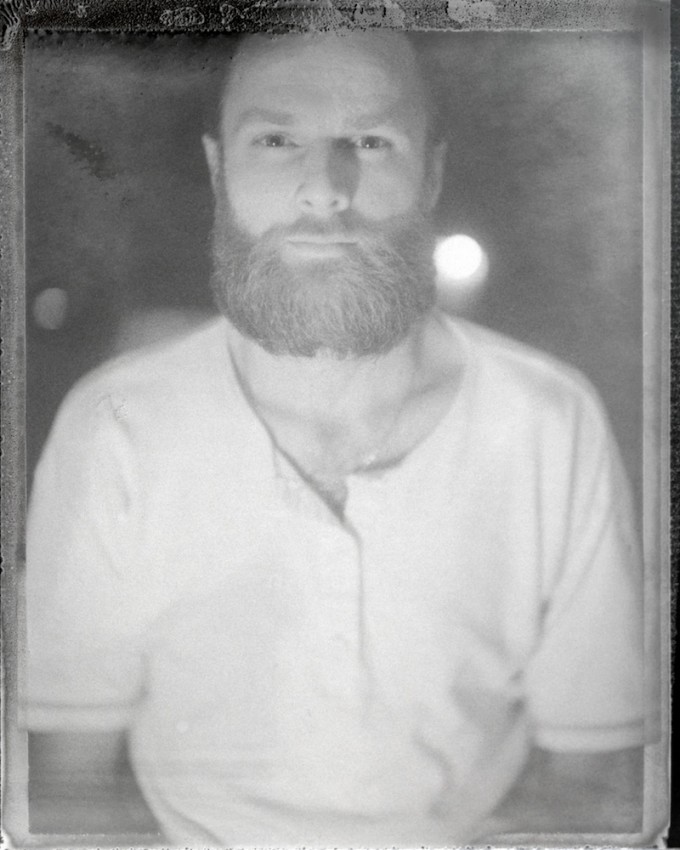
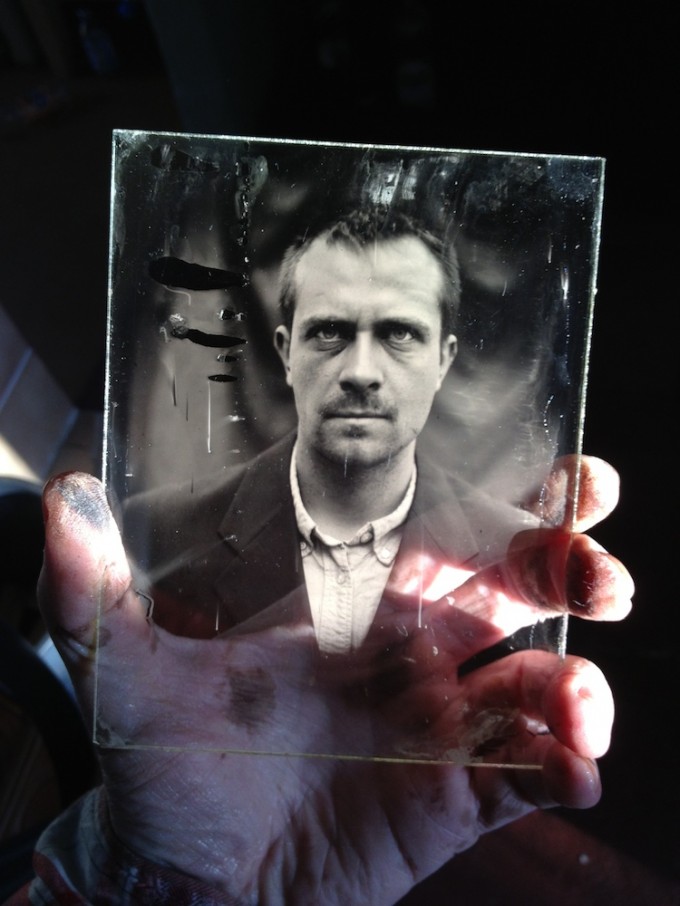
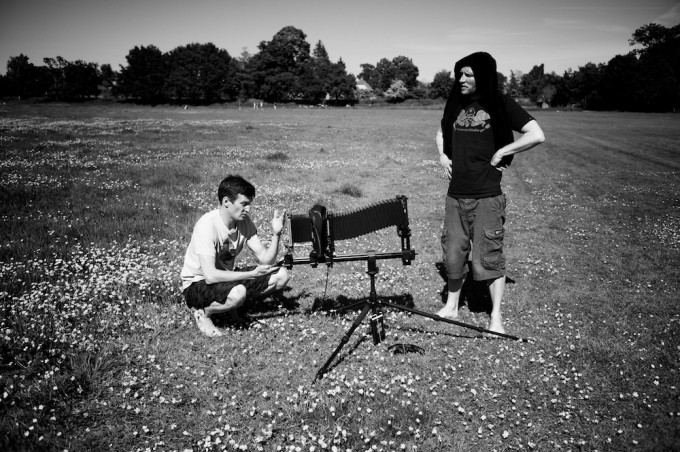
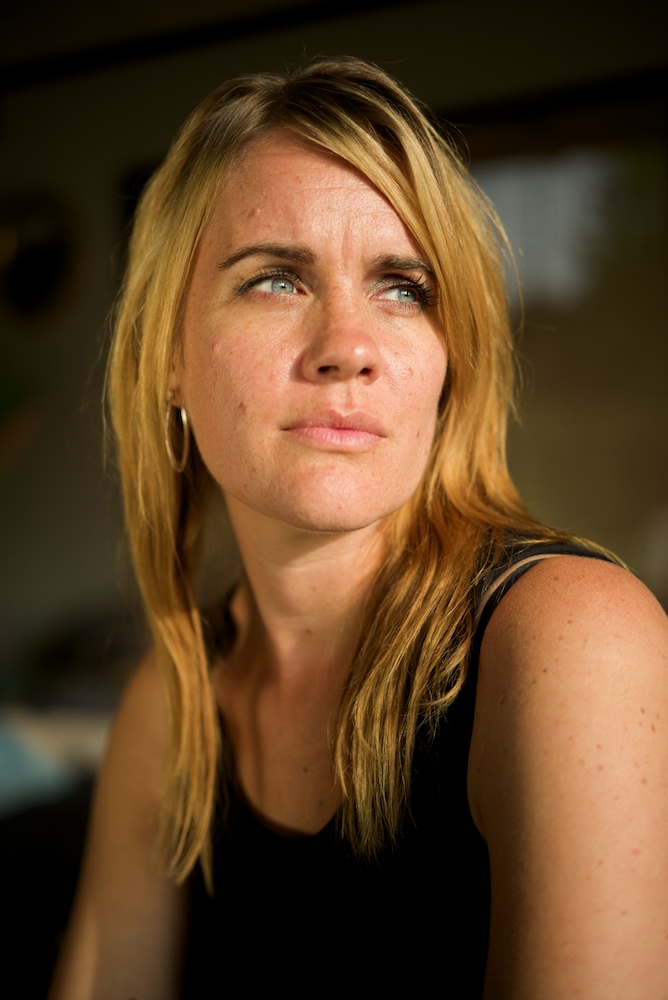
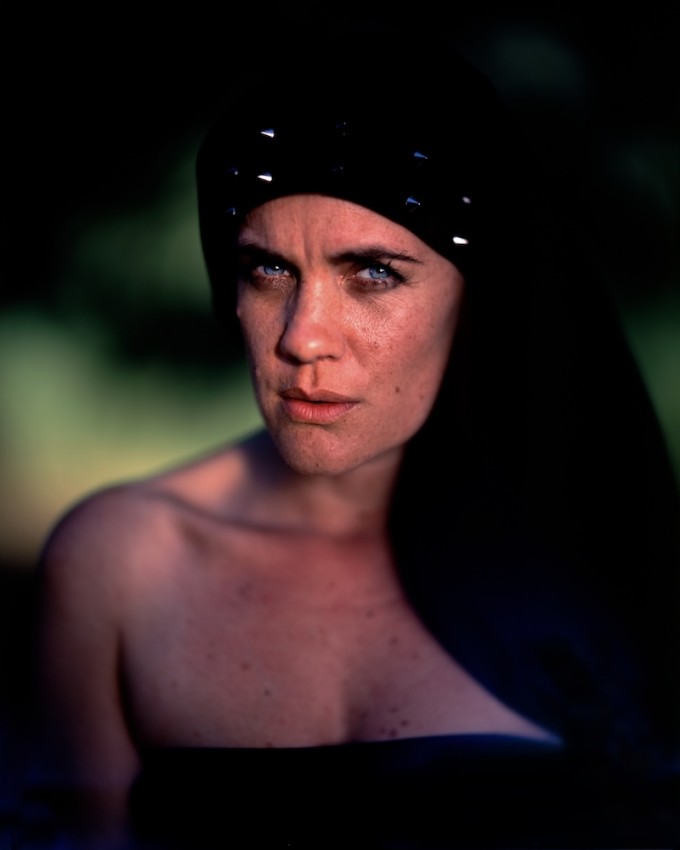
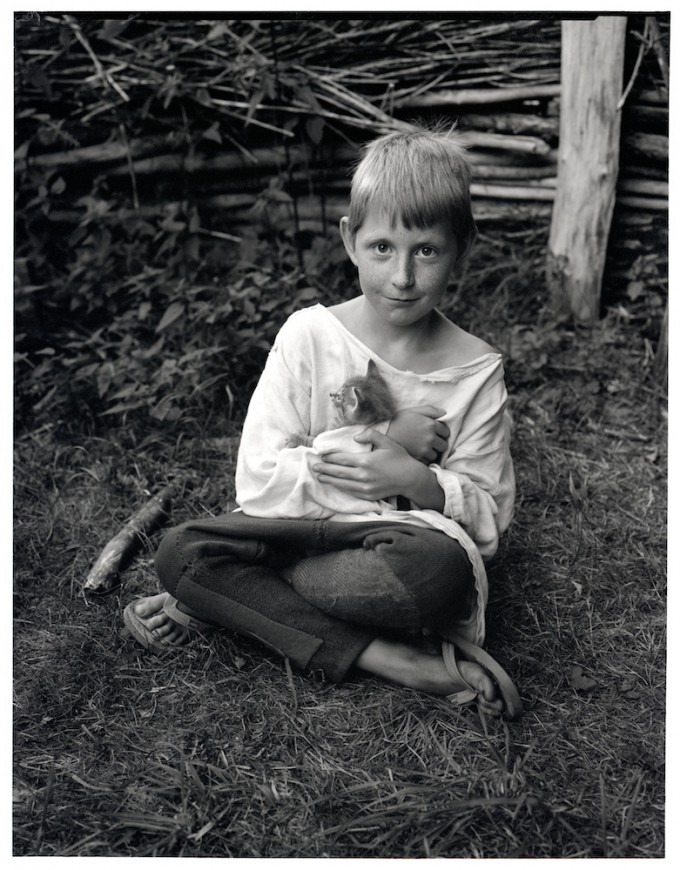
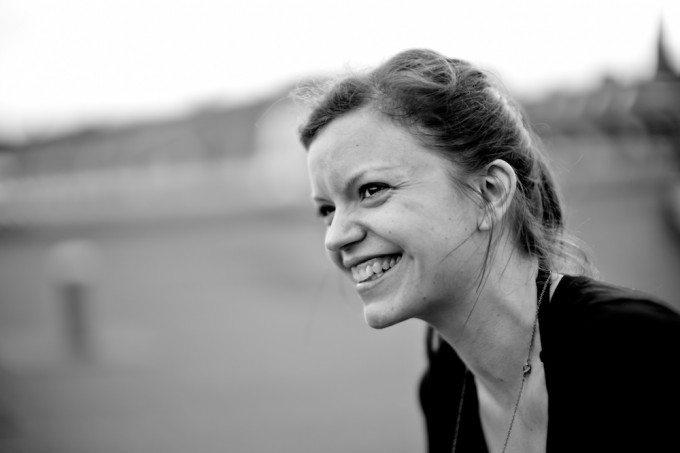
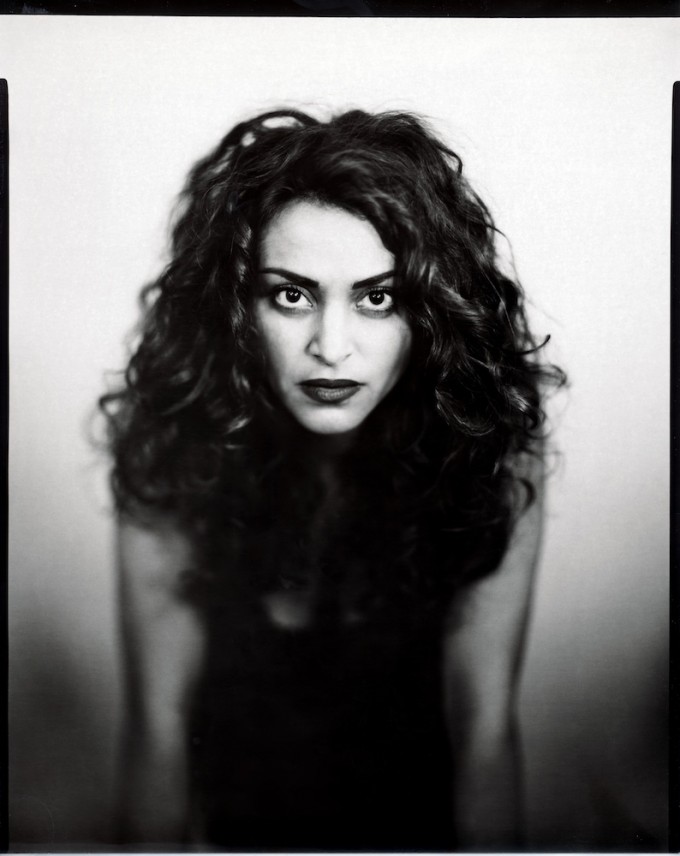
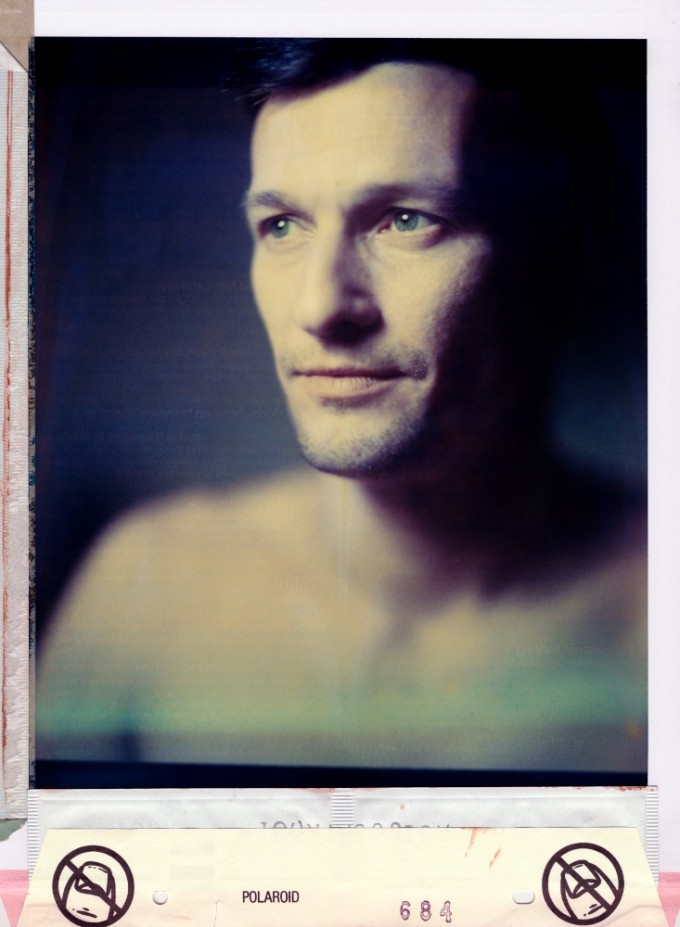
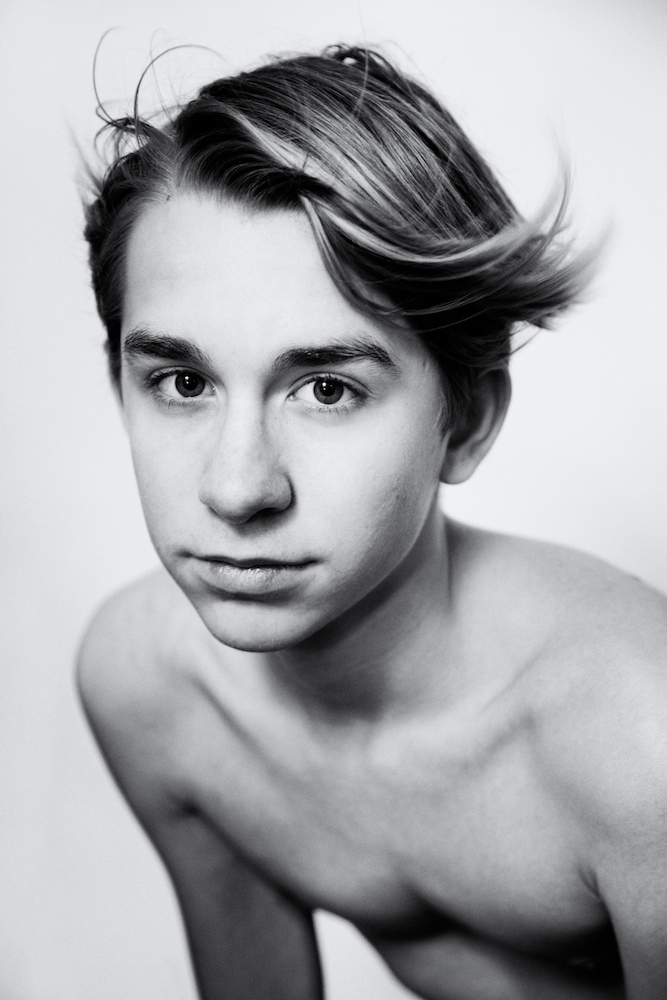

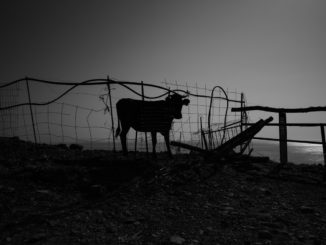

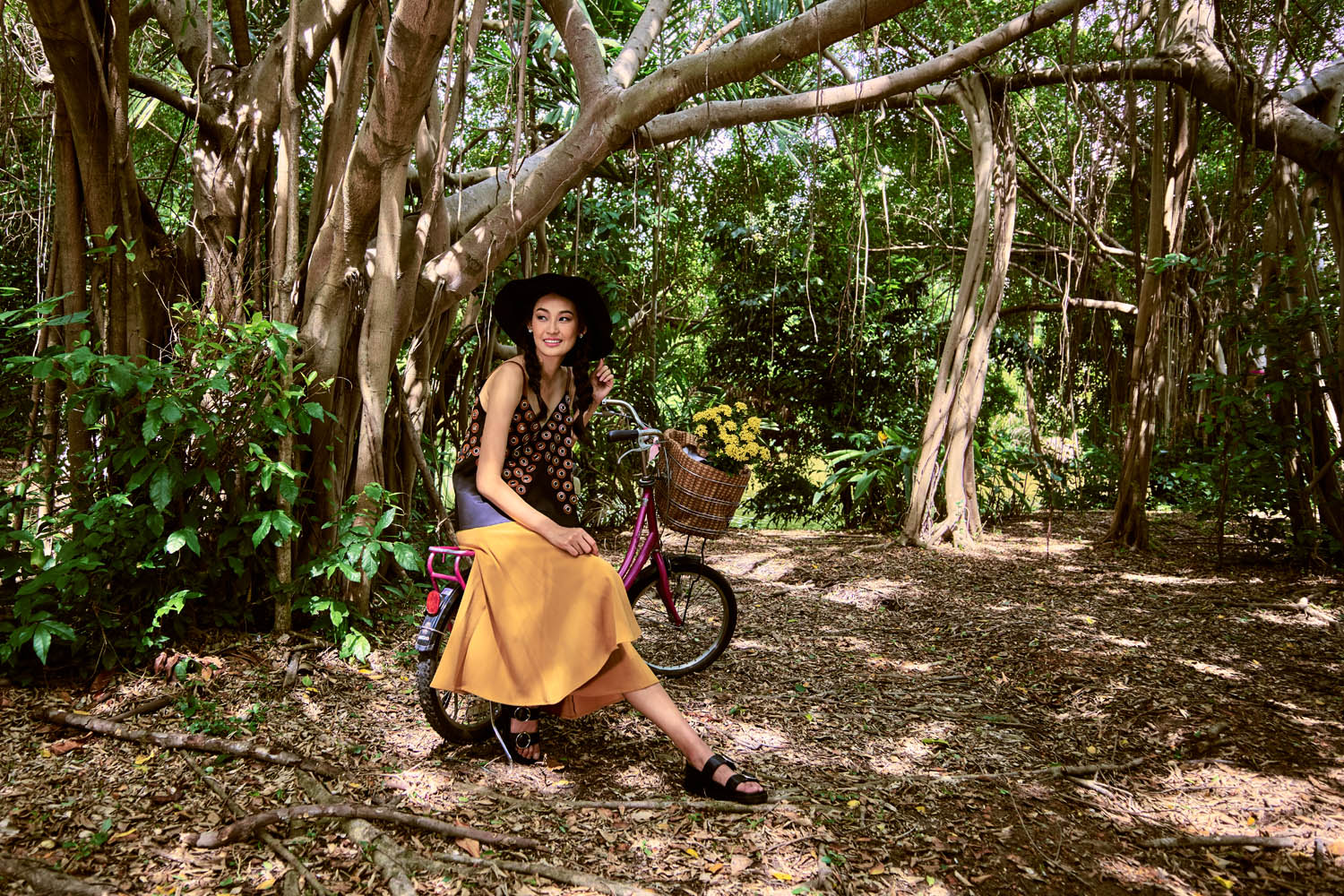
simply amazing!
Can’t believe I missed these
Absolutely stunning pieces of work
Great artistic skill and beautiful to behold
It is interesting, there is always something we like more in whatever we do. Portraits I like seeing, but not doing.
Truly inspirational work. Incredible that such a variety of images came from one mind.
Bjarke, this is one of the most inspirational posts I’ve read. Thank you for that. You have a wonderfully creative, inventive and adventurous minds I have seen in contemporary portrait work. Have you published books you can point us to?
Also, yes, I’d love to see a review on the Sonnetar. It frustrates me so much I have come close to selling it many times, but I know I’d regret doing so, so I keep it in the hope that my skills will improve enough to get the full potential from it.
Please do talk Steve into doing that review. I’d like to know in particular what adjustments you made to focus at 1.1 at minimum focusing distances, and for focus shift.
Thanks,
Linden
Simply outstanding. In an overblown world of art wannabes and “street shooters” you are a true photographer. Kudos on all counts.
I LOVE that image with the 1913 wooden camera. Great story, too.
dear bjarke, king of expired polaroids,
if my father would write something like this in open public about me: ” .. 4) has braces and pimples all over his face .. ” i would kick him out of my life. so 2013/2014 is not the year of empathy for you .. maybe 2015 .. lets hope
cheers
toni
http://en.wikipedia.org/wiki/Empathy
It may have sounded harsh to you but I am sure that a father who spends so much time with his kids that he takes them to a Viking retreat in the summer has good judgment about what offends his son and what doesn’t. I’m sure his son is just fine.
Dear Toni, I showed your comment to my son, Hjalte, who put up a big smile.
But I think he’ll stick around, despite my public writings, as he knows that I think he’s the most wonderful pimple-ridden, brace-wearing teenager, I have ever seen.
And hey, we’re sort of vikings anyway (both our names, as well as the youngest clone, Viggo, come from norse mythology), and according to legend, Hjalte actually offended Bjarke so much, during their final berserker fight against some Swedish invaders, that Bjarke in his fury offended the god of death (Odin) while bidding him welcome. That text (in latin), is the one displayed on my 156 cm tattoo on my right arm. So I guess the, in your eyes, “public writings” date back a thousand years, and are a bit hard too get rid off.
But empathy is good, so is a positive and humouristic approach to life 🙂
PS. While not on wikipedia, you can read all about it and see some images in this book, by Ina Saltz:
http://www.amazon.com/Body-Type-More-Typographical-Tattoos/dp/0810982765/ref=sr_1_1?ie=UTF8&qid=1390952727&sr=8-1&keywords=body+type+volume+2
extraordinary work, fantastic web site !
I love to try Linhof Technika.
One of the best features I think I’ve ever viewed on this site, quite unique and many thanks for sharing Bjarke.
Love the Linhof pic, you see images like that and just want to see the large print of it in person. A Linhof Technika IV has been on my wish list for a long, long time now and seeing images like that makes me want it even more.
Agree about the M9 too and CCD, at base ISO it’s rendering frankly knocks anything the M240 can do out of the park IMHO. I know the M240 is a way, way better camera overall than the limited and temperamental M9 is but I’ve yet to see many M240 CMOS images that make me want to buy one over my M9.
“One of the best features I think I’ve ever viewed on this site, quite unique and many thanks for sharing Bjarke.”
+1000
Truly outstanding. It is a great thing when 809 falls into the hands of someone who can make such magic with it. Thanks for sharing.
just love the leica m240 image…… well done
Hi Bjarke,
What a wonderful post! Thank You for the revisit on some cameras and lenses I haven’t thought about in years. Happy New Year and some new old equipment…
David
Great set of photo’s and a great journey through some wonderful camera’s and formats! Have not yet made the just from medium to large format but this makes me want to even more. Thanks!
Hi Bjarke
I really enjoyed your article. It makes me want to dig my large format cameras out and actually use them again. My personal favorite is my Folmer Schwing 7×17 inch banquet camera, which was originally built for wet plates, but converted to taking film holders. I tried a 12×20 banquet camera briefly, but I felt it was just too big for me, with the massive film holders, etc.
I was using mostly my view cameras until I got hooked on digital cameras. Its just so much easier with cameras like the RX1. But there is a look to the large film cameras which just can’t be duplicated, especially when you make platinum prints.
Best of luck with your 20×24 project!
Rick
Thanks, Rick. I’ve shot a bunch of 4×5″, 5×7″ and 8×10″ cameras, but the only ultra large format I’ve ever seen in real life, let alone shot, is the one I’m building now, so it’s very much from scratch… I imagine the Folmer Schwing must be beautiful — please send some picture, if possible.
Very very nice, and very interesting.
But as fun as tech may be, what is the story of the Zombieboy. ?
I do television for a living, mostly documentary stuff. But now and then some children’s programmes as well. Zombie (who’s not a zombie in real life) appeared in a Halloween kind of show.
My most recent production, a series about relations between people, will air on National Danish Television this week. The intro was actually shot using my old 75 mm Leica Summilux, wide open at f/1.4:
https://vimeo.com/84308394
danish TV shows stuff like zombieboy on children’s programs for halloween? this reminds me of the giraffe put down in front of many children at the danish zoo and chopped up and fed to others. a very enlightened society indeed that doesn’t pretend children are a separate species.
This is beautiful work Mr. Ahistrand-a real pleasure to view- done with beautifully crafted (and mostly forgotten) old cameras- simply awesome…
Fascinating with some stunning shots. Thanks for your efforts!
Just great !!!
I’m going 4×5 soon and just can help being excited about it when i see your results…
The wet plate collodion shot is pure magic!
Forgot to add that the portrait of Katja made with the Sinar and Velvia slide film looks absolutely amazing! The colours! The bokeh! Wow! I wonder what it’s like to look at an 8×10 inch big slide on a light table like that one? Your pictures could be used as study material in photo schools for younglings who never experienced the fidelity of film at its best.
*puts on crazy scientist goggles*
“Now… watch this.”
——-> student faces melting from the awesome power of large format Velvia.
The scan version doesn’t even come close to the 8×10″ dias… It’s very beautiful in all its details (lens flaws included) and amazing colors.
I think I forgot to mention that I developed the color slides myself, that was a very rewarding affair, although a little stressful.
As for teaching, haha, sure, just sign up 😉
So… do we have a lottery winner here or what? 🙂 Noctilux, Summilux, M9-P and all the other stuff, wow! Keep up the fun in doing things you love but consider staying with one system for a longer period instead of falling for the “trying and testing” game. Best
Fortunately it’s not a gear contest.
Great portraits! Thanks for posting.
Also good to be reminded that large format film is still king. That 4×5 Ilford Delta portrait has incredible tonality. Most gear sites are so focused on “full frame”, aps-c or other that it is easy to forget that film still exists. It is not better or worse, just different. You get different looks or feels with the different emulsions. There is no reason why we shouldn’t all embrace more formats (and I hope you all practice drawing in between).
My god the image quality you get from large format. Makes any “full frame” digital run away tail between legs. 🙂
Viking Viggo and the Afghan Princess both do it for me in spades, lovely!! But they are all superb. Thanks for sharing and for the write-up. Very interesting. I also have Linhoff Master Technika and a fridge full of film, don’t use it often enough but love the “process” like rolling your own cigarettes instead of taking one out of a packet. Use my M9 and MM nearly all the time but I also have a Hsselblad 500/2000 system (film) which gets used quite a bit with TriX and HP5. Love the square format and the tonality of film. Keep up the good work and send in some more.
In-short as Ross says (above) Wonderful inspiration and very educational.
Unbelievably great. I love the wet plate shot. Well done!
Wonderful inspiration and very educational.
Inspirational photos!
The dimensionality of big format photos is unequalled by smaller formats and you show it here.
And these old lenses bring so much atmosphere in your photos, wonderful.
… miraculous, marvelous, photography as it was meant to be – painting with light ,,, outright adorable …
They’re all interesting and very competent forays into different formats. For some inexplicable reason I found the Canon 5D portrait the most impressive of the lot. Maybe because there’s not the tiniest trace of “hmm, that looks a bit contrived”. It’s very well lit, very well done in B&W and, most important, it is what a portrait should be: providing insight in the subject.
A very competent, creative and imaginative photographer who’s not afraid to take some risks, and who exudes enthusiasm for the medium. I like that!
I agree.
Yes, totally. Could not agree more.
Very enjoyable read and great work Bjarke.
I’m looking forward to the 2014 edition..
Best regards
Huss
Meticulous and brilliant work. Breathtaking, literally. The sheer hard work is staggering, and the results are spectacular. Thank you.
Tak, så rart at se! Meget inspirerende!
http://justsomething.co/worlds-largest-film-camera-produces-6-ft-long-negatives/
Wow — this is eye opening. Got me thinking a random thought — I wonder what is the largest negative ever made…google, here I come…
Wonderful photos and loved the wide variety of formats. Truly impressive and educational too.
Thank you for sharing!
I bought a Sonnetar from Japan, and found it to be hopeless! In the end, they (Japan Exposures) took it back and confirmed that it was quite out-of-focus, and I got my money refunded.
It was advertised as having a special “coma adjustment” at the back ..but nowhere did the spec say that you have to take the lens off the camera to make the adjustment! To cap it all, some descriptive text (in Japanese) says that the coma adjustment should be left at its 4 metres setting when used with a Leica – so there isn’t really any point in actually having that correction adjustment! ..I think the lens must have been meant for “live view” cameras, like m4/3 models or the latest M Type 240.
Comparing it against an original 1950s 50mm f1.1 Zunow, the Zunow beat it hands down.
Well done for managing to focus it and get a decent picture!
I haven’t tried the Zunow, and you’re right, the Sonnetar is very difficult to shoot — but the result, never the less, is outstanding, if you nail it. And the Sonnar-design is wonderful, even in this bastard version.
I really enjoyed this… Beautiful images. 20×24 Polaroid still around?
Hi Martin, yeah, they still have some old stock at the 20×24″ in New York, and San Francisco, but I plan to shoot paper negatives (as it’s the cheapest :-), wet plates and the 20 Ilford sheets which I’ve bought…
This is way photography was invented 🙂
This points out to me rather elegantly the folly associated with discussions of resolution, sensors, IQ, etc. Beautiful work!
excellent mix of photographic work!
wow. just loved the variety here. a real education for me.